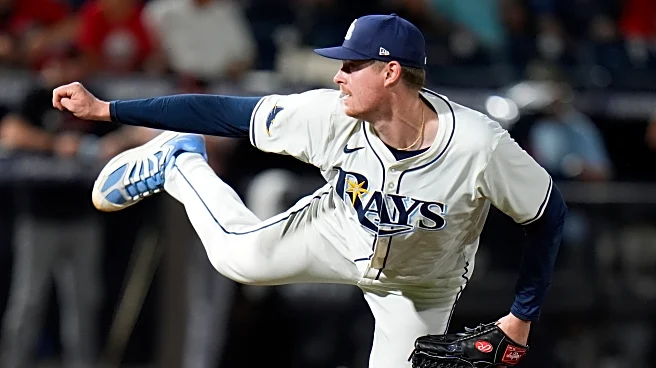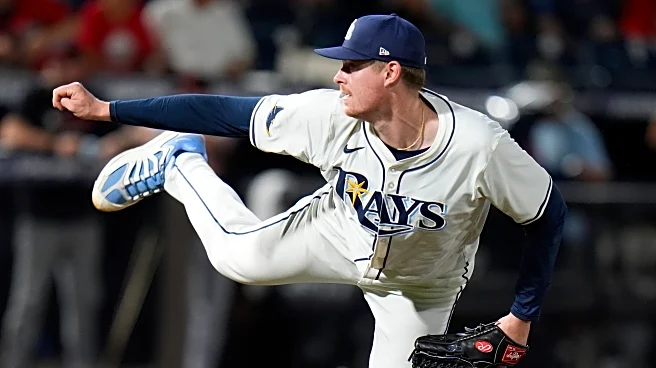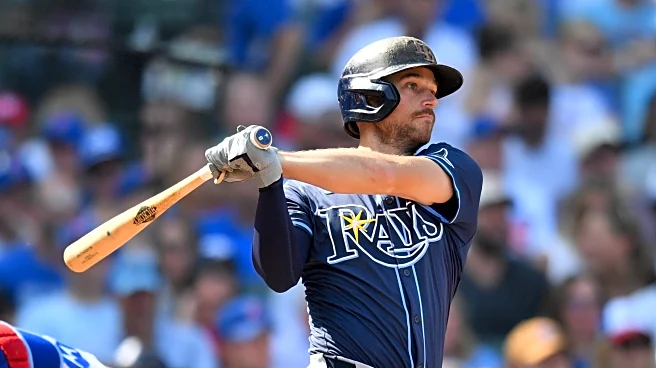What's Happening?
The Tampa Bay Rays have decided not to exercise their $11 million option on closer Pete Fairbanks, making him a free agent. This decision was part of several roster moves announced by the team, which included
exercising club options for infielders Brandon Lowe and Taylor Walls for the 2026 season. Fairbanks, who will turn 32 in December, has been a key player for the Rays, serving as their primary closer over the past four seasons. During his tenure, he saved 83 games and maintained a 2.83 ERA, with 332 strikeouts and 103 walks over 265.1 innings. Despite his strong performance, the Rays opted to pay a $1 million buyout instead of committing a significant portion of their payroll to Fairbanks, given their strong returning relief corps and budget constraints.
Why It's Important?
Fairbanks entering free agency is significant for the MLB market, particularly for teams seeking high-leverage relief options. He is expected to attract interest due to his impressive fastball, slider, and newly added cutter, which have made him a formidable closer. With the market for relievers being relatively soft, Fairbanks stands out as a top-tier option alongside other notable free agents like Edwin Diaz. His availability could impact team strategies and payroll allocations, especially for franchises looking to bolster their bullpen without overspending. The Rays' decision reflects broader economic considerations within the league, where teams must balance talent acquisition with financial sustainability.
What's Next?
As Fairbanks enters free agency, he is likely to receive multiyear offers from teams in need of a reliable closer. His performance metrics, including a career-best season in 2025, position him as a desirable asset. Teams with budget flexibility and a need for bullpen strength will likely pursue him aggressively. The Rays, meanwhile, will focus on optimizing their roster within financial constraints, relying on their existing relief corps to maintain competitive performance. The outcome of Fairbanks' free agency could influence other teams' decisions regarding their bullpen configurations and financial strategies.













